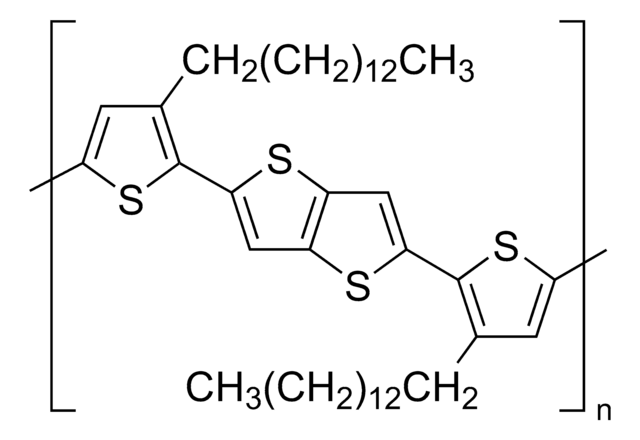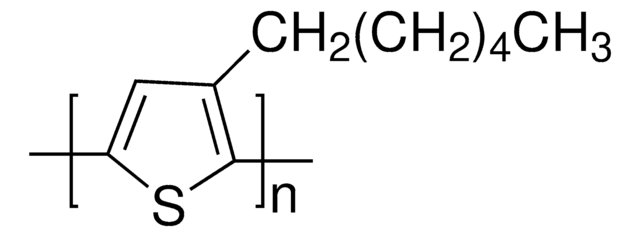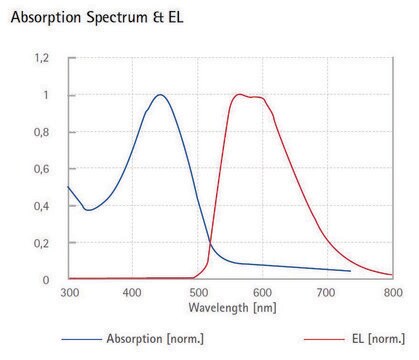Wichtige Dokumente
510831
Poly(3-octylthiophen-2,5-diyl)
regiorandom
Synonym(e):
P3OT
About This Item
Empfohlene Produkte
Mol-Gew.
average Mn 22,000
average Mw 36,600
Farbe
red
mp (Schmelzpunkt)
198-211 °C
Löslichkeit
chloroform, methylene chloride, toluene, and THF: soluble
Fluoreszenz
λex 419 nm; λem 550 nm in chloroform
Leistung von OPV-Bauelementen
ITO/PEDOT:PSS/P3OT:PC61BM (1:2)/LiF/Al
Suchen Sie nach ähnlichen Produkten? Aufrufen Leitfaden zum Produktvergleich
Allgemeine Beschreibung
Anwendung
Rechargeable battery electrodes, electrochromic devices, chemical and optical sensors, light-emitting diodes, microelectrical amplifiers, field-effect transistors and non-linear optical materials.
Leistungsmerkmale und Vorteile
Verpackung
Rechtliche Hinweise
Lagerklassenschlüssel
11 - Combustible Solids
WGK
WGK 3
Flammpunkt (°F)
Not applicable
Flammpunkt (°C)
Not applicable
Persönliche Schutzausrüstung
Eyeshields, Gloves, type N95 (US)
Hier finden Sie alle aktuellen Versionen:
Besitzen Sie dieses Produkt bereits?
In der Dokumentenbibliothek finden Sie die Dokumentation zu den Produkten, die Sie kürzlich erworben haben.
Kunden haben sich ebenfalls angesehen
Artikel
Light-Emitting Polymers
Intrinsically stretchable active layers for organic field-effect transistors (OFET) are discussed. Polymer structural modification & post-polymerization modifications are 2 methods to achieve this.
Unser Team von Wissenschaftlern verfügt über Erfahrung in allen Forschungsbereichen einschließlich Life Science, Materialwissenschaften, chemischer Synthese, Chromatographie, Analytik und vielen mehr..
Setzen Sie sich mit dem technischen Dienst in Verbindung.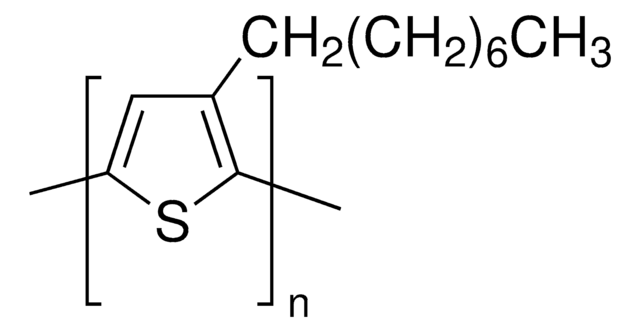
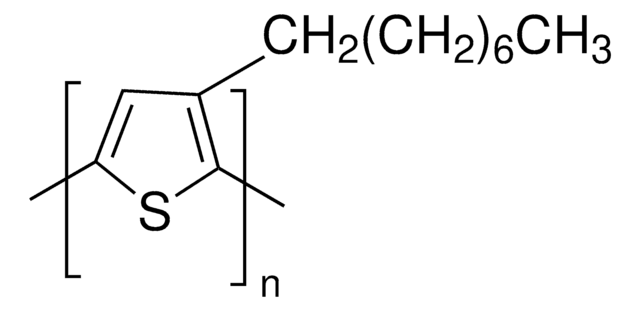
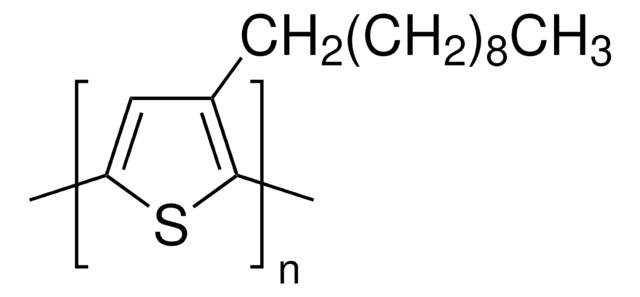


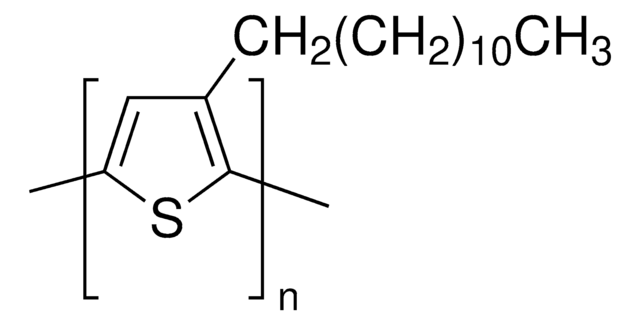


![Poly[2-methoxy-5-(2-ethylhexyloxy)-1,4-phenylenvinylen] average Mn 70,000-100,000](/deepweb/assets/sigmaaldrich/product/structures/344/488/b8f8179d-3970-4deb-a754-adda88cdb36f/640/b8f8179d-3970-4deb-a754-adda88cdb36f.png)
